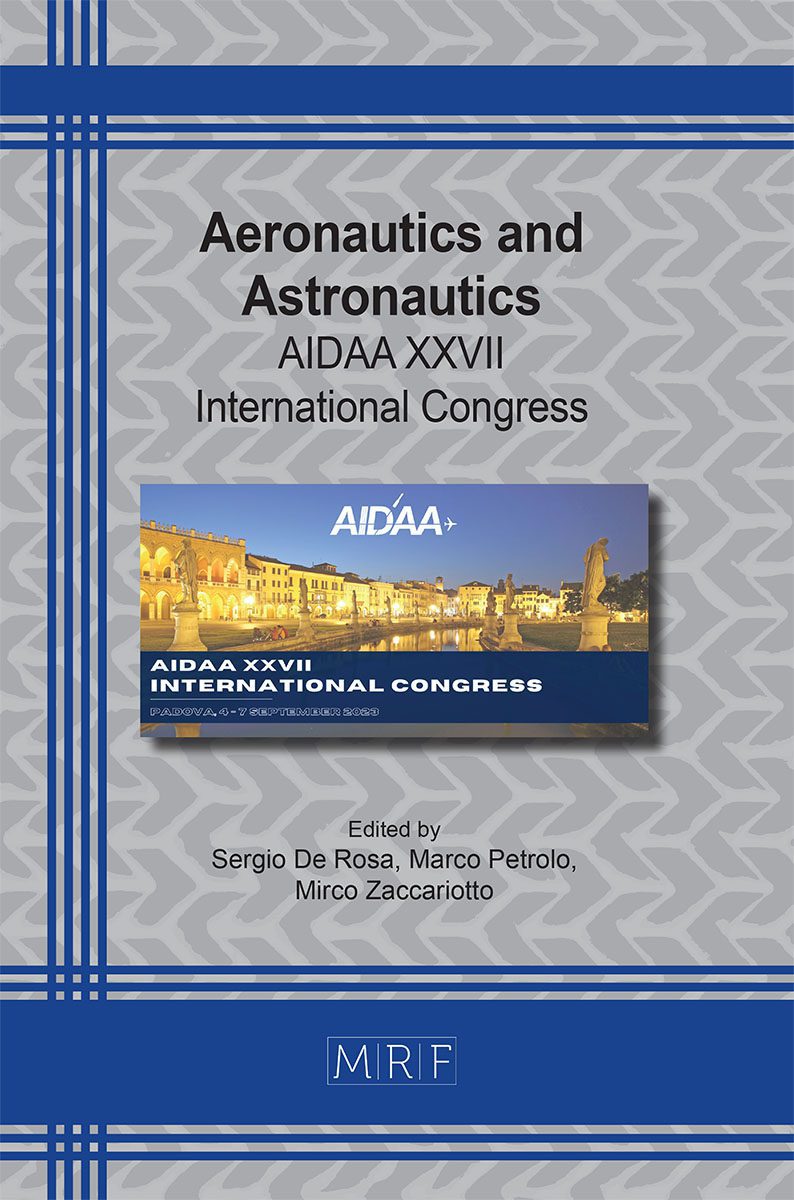Development of a DNS solver for compressible flows in generalized curvilinear coordinates
Giulio Soldati, Alessandro Ceci, Sergio Pirozzoli
download PDFAbstract. We present a solver for DNS of turbulent compressible flows over arbitrary shaped geometries. The code solves the compressible Navier-Stokes equations in a generalized curvilinear coordinates system, using high-order central finite-difference schemes combined with WENO reconstruction for shock-waves treatment. An innovative stabilization strategy for central schemes based on skew-symmetric-like splitting of convective derivatives is used. The code is oriented to modern HPC platforms thanks to MPI parallelization and the ability to run on GPU architectures. The robustness and accuracy of the present code is assessed both in the low-subsonic case and in the supersonic case. We show here the results of a turbulent curved channel flow and a turbulent supersonic compression ramp, which proved to be in excellent match with previous studies.
Keywords
Generalized Curvilinear Coordinates, Shock-Wave/Boundary Layer Interaction, Turbulent Compression Ramp, Curved Channel Flow
Published online 11/1/2023, 4 pages
Copyright © 2023 by the author(s)
Published under license by Materials Research Forum LLC., Millersville PA, USA
Citation: Giulio Soldati, Alessandro Ceci, Sergio Pirozzoli, Development of a DNS solver for compressible flows in generalized curvilinear coordinates, Materials Research Proceedings, Vol. 37, pp 222-225, 2023
DOI: https://doi.org/10.21741/9781644902813-48
The article was published as article 48 of the book Aeronautics and Astronautics
![]() Content from this work may be used under the terms of the Creative Commons Attribution 3.0 license. Any further distribution of this work must maintain attribution to the author(s) and the title of the work, journal citation and DOI.
Content from this work may be used under the terms of the Creative Commons Attribution 3.0 license. Any further distribution of this work must maintain attribution to the author(s) and the title of the work, journal citation and DOI.
References
[1] Bernardini, M., Modesti, D., Salvadore, F., & Pirozzoli, S. (2021). STREAmS: a high-fidelity accelerated solver for direct numerical simulation of compressible turbulent flows. Computer Physics Communications, 263, 107906. https://doi.org/10.1016/j.cpc.2021.107906
[2] Li, Y., Fu, L., & Adams, N. A. (2021). A low-dissipation shock-capturing framework with flexible nonlinear dissipation control. Journal of Computational Physics, 428, 109960. https://doi.org/10.1016/j.jcp.2020.109960
[3] Piquet, A., Zebiri, B., Hadjadj, A., & Safdari Shadloo, M. (2020). A parallel high-order compressible flows solver with domain decomposition method in the generalized curvilinear coordinates system. International Journal of Numerical Methods for Heat & Fluid Flow, 30(1), 2-38. https://doi.org/10.1108/HFF-01-2019-0048
[4] Pirozzoli, S. (2010). Generalized conservative approximations of split convective derivative operators. Journal of Computational Physics, 229(19), 7180-7190. https://doi.org/10.1016/j.jcp.2010.06.006
[5] Kawai, S., & Lele, S. K. (2008). Localized artificial diffusivity scheme for discontinuity capturing on curvilinear meshes. Journal of Computational Physics, 227(22), 9498-9526. https://doi.org/10.1016/j.jcp.2008.06.034
[6] Visbal, M. R., & Gaitonde, D. V. (2002). On the use of higher-order finite-difference schemes on curvilinear and deforming meshes. Journal of Computational Physics, 181(1), 155-185. https://doi.org/10.1006/jcph.2002.7117
[7] Pirozzoli, S. (2011). Numerical methods for high-speed flows. Annual review of fluid mechanics, 43, 163-194. https://doi.org/10.1146/annurev-fluid-122109-160718
[8] Chandravamsi, H., Chamarthi, A. S., Hoffmann, N., & Frankel, S. H. (2023). On the application of gradient based reconstruction for flow simulations on generalized curvilinear and dynamic mesh domains. Computers & Fluids, 258, 105859. https://doi.org/10.1016/j.compfluid.2023.105859
[9] Gaitonde, D., & Visbal, M. (1999, January). Further development of a Navier-Stokes solution procedure based on higher-order formulas. In 37th Aerospace Sciences Meeting and Exhibit (p. 557). https://doi.org/10.2514/6.1999-557
[10] Pirozzoli, S. (2011). Stabilized non-dissipative approximations of Euler equations in generalized curvilinear coordinates. Journal of Computational Physics, 230(8), 2997-3014. https://doi.org/10.1016/j.jcp.2011.01.001
[11] Ducros, F., Ferrand, V., Nicoud, F., Weber, C., Darracq, D., Gacherieu, C., & Poinsot, T. (1999). Large-eddy simulation of the shock/turbulence interaction. Journal of Computational Physics, 152(2), 517-549. https://doi.org/10.1006/jcph.1999.6238
[12] Spalart, P. R., Moser, R. D., & Rogers, M. M. (1991). Spectral methods for the Navier-Stokes equations with one infinite and two periodic directions. Journal of Computational Physics, 96(2), 297-324. https://doi.org/10.1016/0021-9991(91)90238-G
[13] Moser, R. D., & Moin, P. (1987). The effects of curvature in wall-bounded turbulent flows. Journal of Fluid Mechanics, 175, 479-510. https://doi.org/10.1017/S0022112087000491
[14] Brethouwer, G. (2022). Turbulent flow in curved channels. Journal of Fluid Mechanics, 931, A21. https://doi.org/10.1017/jfm.2021.953
[15] Wu, M., & Martin, M. P. (2007). Direct numerical simulation of supersonic turbulent boundary layer over a compression ramp. AIAA journal, 45(4), 879-889. https://doi.org/10.2514/1.27021
[16] Bookey, P., Wyckham, C., Smits, A., & Martin, P. (2005). New experimental data of STBLI at DNS/LES accessible Reynolds numbers. In 43rd AIAA Aerospace Sciences Meeting and Exhibit (p. 309). https://doi.org/10.2514/6.2005-309































